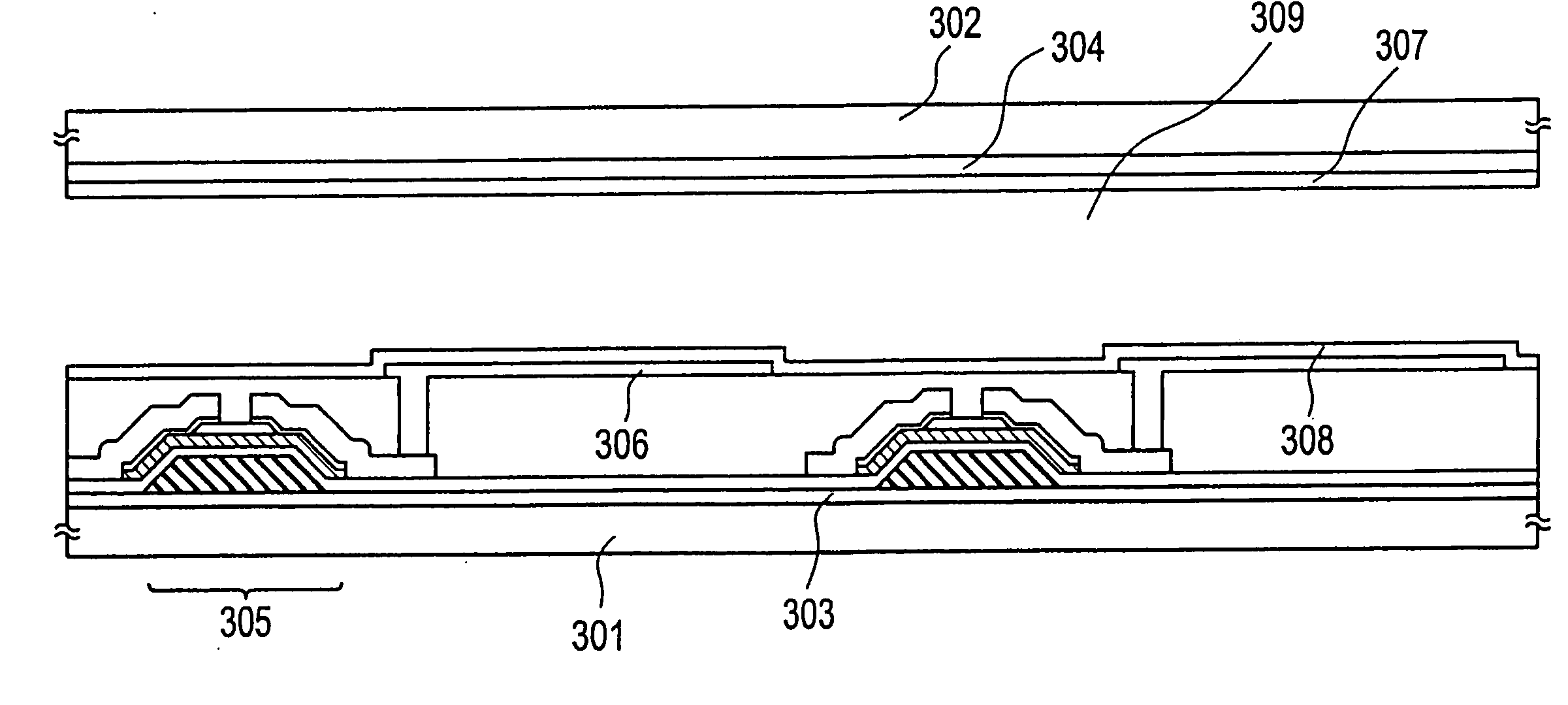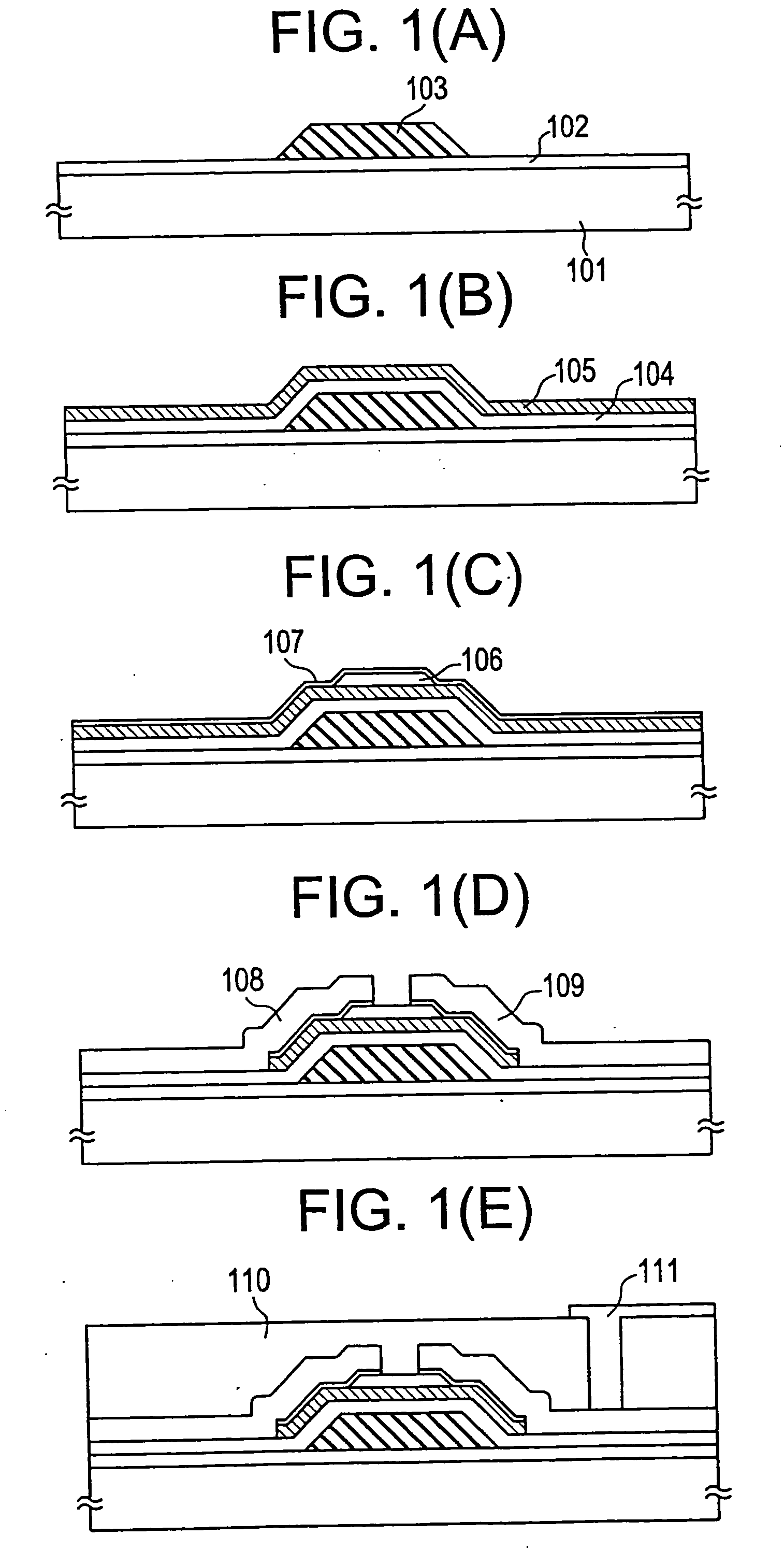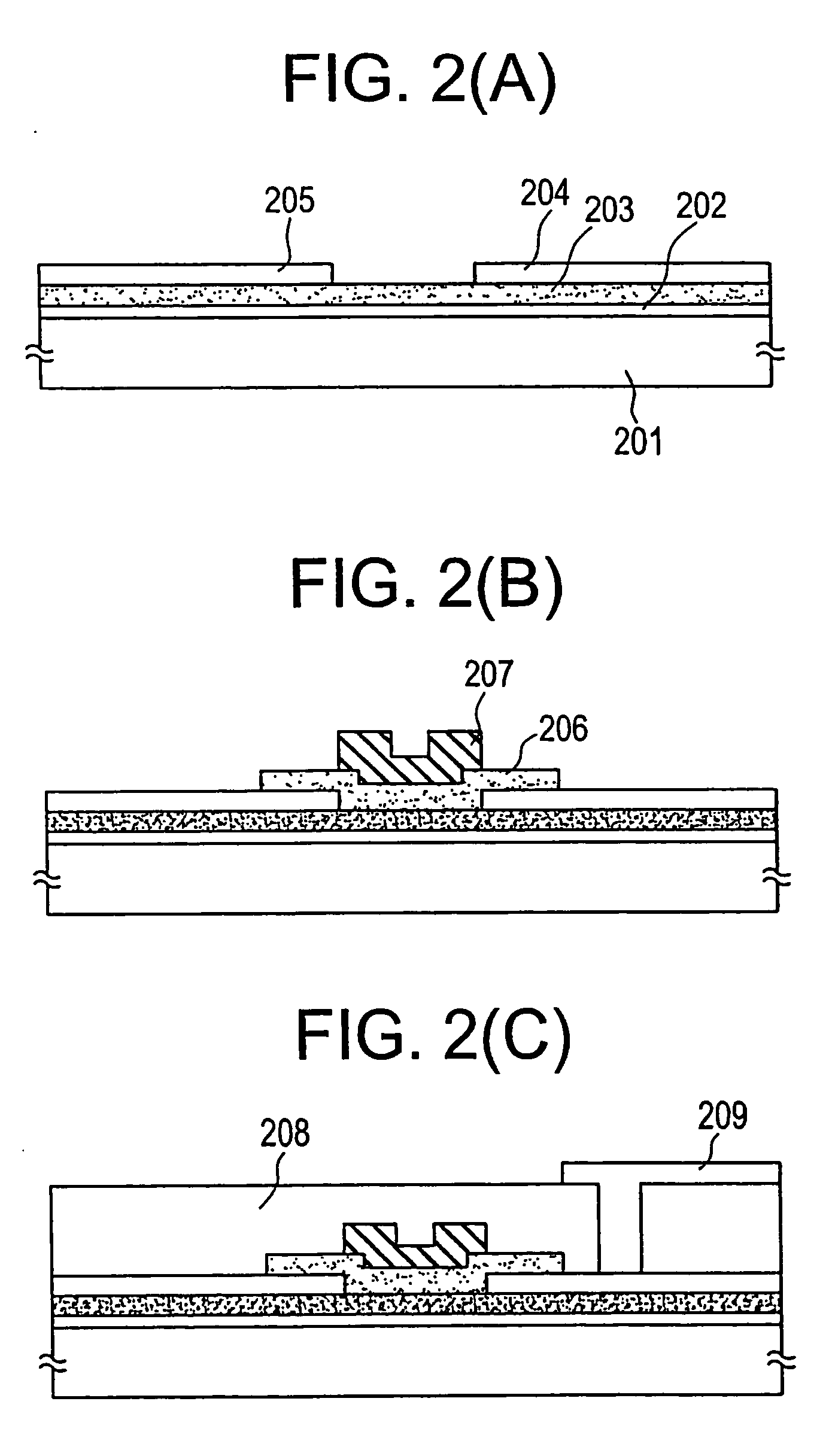Semiconductor device, method of fabricating same, and electrooptical device
a semiconductor and thin-film technology, applied in the field of semiconductor devices, can solve problems such as difficulty in forming thin-film transistors, and achieve the effect of suppressing drawbacks
- Summary
- Abstract
- Description
- Claims
- Application Information
AI Technical Summary
Benefits of technology
Problems solved by technology
Method used
Image
Examples
example 1
[0027] The present example shows an example in which inverted-staggered TFTs are formed on a substrate of PET (polyethylene terephthalate) which is an organic resin.
[0028] As shown in FIG. 1(A), a PET film 101 having a thickness of 100 μm is first prepared and heat-treated to degas the film. This heat-treatment is required to be conducted at a temperature higher than the highest temperature applied in later processes. In the processes shown in the present example, a temperature of 160° C. used during formation of an amorphous silicon film by plasma-assisted CVD is the highest heating temperature. Therefore, the heat-treatment for degassing the PET film is performed at 180° C.
[0029] A layer of an acrylic resin 102 is formed on this PET film 101. As an example, a methyl ester of acrylic acid can be used as the acrylic resin. This acrylic resin layer 102 acts to prevent precipitation of oligomers on the surface of the PET film 101 in processes conducted later. The acrylic resin layer...
example 2
[0038] The present example shows a case in which an active matrix liquid crystal display is fabricated, using the thin-film transistors described in Example 1. The liquid crystal electrooptical device described in the present example is shown in FIG. 3 in cross section.
[0039] In FIG. 3, PET films 301 and 302 having a thickness of 100 μm form a pair of substrates. An acrylic resin layer 303 acts as a planarizing layer. Indicated by 306 are pixel electrodes. In FIG. 3, only the structure corresponding to two pixels is shown.
[0040] Indicated by 304 is a counter electrode. Orientation films 307 and 308 orient a liquid crystal 309 which can be a twisted-nematic (TN) liquid crystal, supertwisted-nematic (STN) liquid crystal, or a ferroelectric liquid crystal. Generally, a TN liquid crystal is employed. The thickness of the liquid crystal layer is several micrometers to about 10 μM.
[0041] Thin-film transistors (TFTs) 305 are connected with the pixel electrodes 306. Electric charge going...
example 3
[0043] The present example shows an example in which coplanar thin-film transistors used for an active matrix liquid crystal display are fabricated. The process sequence for fabricating the thin-film transistors of the present example is shown in FIG. 2. First, a PET film 201 having a thickness of 100 μm is prepared as a filmy organic resin substrate. The film is heated-treated at 180° C. to promote degassing from the PET film 201. A layer of an acrylic resin 202 is formed on the surface of the film. In this example, an ethyl ester of acrylic acid is used as the acrylic resin.
[0044] Then, a substantially intrinsic (I-type) semiconductor layer 203 in which a channel formation region is formed is grown by plasma-assisted CVD under the following conditions:
film formation temperature160° C.(at which the substrate is heated):reaction pressure:0.5 torrRF power (13.56 MHz):20 mW / cm2reactant gas:SiH4
[0045] In this example, a parallel-plate plasma-CVD machine is used to grow the film.
[00...
PUM
| Property | Measurement | Unit |
|---|---|---|
| thickness | aaaaa | aaaaa |
| diameters | aaaaa | aaaaa |
| temperature | aaaaa | aaaaa |
Abstract
Description
Claims
Application Information
 Login to View More
Login to View More - R&D
- Intellectual Property
- Life Sciences
- Materials
- Tech Scout
- Unparalleled Data Quality
- Higher Quality Content
- 60% Fewer Hallucinations
Browse by: Latest US Patents, China's latest patents, Technical Efficacy Thesaurus, Application Domain, Technology Topic, Popular Technical Reports.
© 2025 PatSnap. All rights reserved.Legal|Privacy policy|Modern Slavery Act Transparency Statement|Sitemap|About US| Contact US: help@patsnap.com



